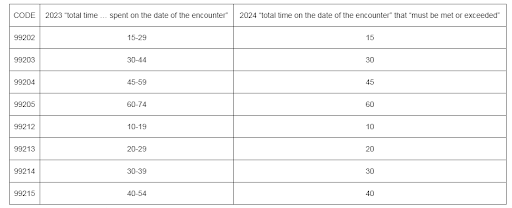Medical billing and coding is a challenge for any healthcare specialty, but it can be especially complex in the field of pain management. Headaches are one of the most common conditions that physicians treat. From ensuring accurate coding and documentation to navigating ever-changing regulations, the billing process can be quite challenging. It’s also important that patients get access to the care they need. Dedicated pain management medical billing services, including medical coding support, can help ease the claim submission process, ensure appropriate reimbursement, and promote care. This post looks at migraines, a primary headache type, and its ICD-10 and CPT codes.


Optimize Your Pain Management Billing and Coding
Ensure Proper Reimbursement and Care!
Coding Migraines

The American Migraine Foundation reports that approximately 12 percent of the U.S. population is affected by migraines.
Migraines present with various symptoms, mainly a severe, throbbing headache typically affecting one side of the head. The intensity of migraines tends to worsen with physical activity, exposure to bright lights, loud noises, or specific odors. These episodes can last from four hours to several days, significantly impacting daily life. Migraines are triggered by different factors unique to each individual, including:
- Sudden changes in weather or environment
- Irregular sleep patterns
- Strong smells or fumes
- Emotional factors
- Stress
- Overexertion
- Sudden loud noises
- Motion sickness
- Low blood sugar levels
- Skipping meals
ICD-10 Codes for Migraines
The International Headache Society Classification of Headache Disorders 3rd edition (ICHD-3) defines chronic migraines as a headache occurring on 15 or more days a month for more than three months, which on at least eight days a month has the features of a migraine headache. Accurate coding is crucial for patients to get the treatment they need.
However, diagnosing migraines and coding them to the highest level of specificity is not easy.
ICD-10 classifies migraines under the following types and subtypes:
Types
- Hemiplegic migraines (motor)
- Persistent migraines (episodic)
- Ophthalmoplegic migraines
- Abdominal migraines
- Chronic migraines with/without aura
Subtypes
The different types of migraines are further categories into the following subtypes:
- with or without aura (vision, sensory, speech-language disturbances)
- intractable (refractory) or not intractable (responsiveness to treatment)
- with or without status migrainosus (lasting 72+ hours)
Accurate diagnosis coding depends on clear documentation. The most specific (ICD-10) code should be used to report diagnosis of migraines. Documentation plays a key role here. An AAPC article notes that coders may need to provide guidance to the healthcare provider on the specific details required in the documentation to code the migraine diagnosis to the highest level of specificity.
For example, the distinction between episodic (persistent) migraines and chronic migraines is based on the frequency of headache days per month. According to the article, Dr. David Kudrow notes that while the symptoms of both types of migraines are identical, the crucial distinguishing factor lies in the frequency of headache days.
Comprehensive documentation is necessary to capture the ICD-10 codes for chronic migraine with aura or the other subtypes. The ICD-10 codes for the 2024 fiscal year are:
G43.0 Migraines without aura
G43.1 Migraines with aura
G43.4 Hemiplegic migraines
G43.5 Persistent migraines aura without cerebral infarction
G43.6 Persistent migraines aura with cerebral infarction
G43.7 Chronic migraines without aura
G43.A Cyclical vomiting
G43.B Ophthalmoplegic migraines
G43.C Periodic headache syndromes in child or adult
G43.D Abdominal migraines
G43.8 Other migraines
G43.9 Migraines, unspecified
G43.E Chronic migraines with aura
G43.E Chronic migraines with aura was added to the ICD-10 code category in 2024:
see
https://www.aapc.com/blog/90622-medical-coding-for-chronic-migraine/
G43.E Chronic migraine with aura
EXCLUDES1 *migraine with aura (G43.1-)
G43.E0 Chronic migraine with aura, not intractable
*Chronic migraine with aura, without refractory migraine
G43.E01 Chronic migraine with aura, not intractable, with status migrainosus
G43.E09 Chronic migraine with aura, not intractable, without status migrainosus
*Chronic migraine with aura NOS
G43.E1 Chronic migraine with aura, intractable
*Chronic migraine with aura, with refractory migraine
G43.E11 Chronic migraine with aura, intractable, with status migrainosus
G43.E19 Chronic migraine with aura, intractable, without status migrainosus
CPT Coding
Reporting outpatient office encounters and treatment of migraines requires using the appropriate CPT code. This could include evaluation and management (E/M) codes for office visits, or specific procedure codes for diagnostic or treatment procedures.
E/M Coding
In 2024, the time range in minutes for billing CPT codes 99202-99205 and 99212-99215 for office visits were removed and replaced with a “minimum time threshold” or single total time amount. The following table shows how E/M coding changes in 2024.
Note: There is no change in descriptor for 99211: Office or other outpatient visit for the evaluation and management of an established patient that may not require the presence of a physician or other qualified healthcare professional.
Coding for Migraine Treatment
Here are the common treatments for migraines and their CPT codes:
Injection Therapy for Headache (Migraine and Other): 20605, 20606, 20999, 64400, 64405, 64408, 64415, 64417, 64418, 64420, 64421, 64450, 64454, 64455, 64505, 64999.
Nerve Blocks: 64405 Injection, anesthetic agent; greater occipital nerve.
Neurostimulator Implantation: 64568 Open implantation of cranial nerve (e.g., vagus nerve) neurostimulator electrode array and pulse generator
Imaging Studies: CT scan and MRI
CT scan
| 70450 | CT Brain without contrast material |
| 70470 | CT Brain with and without contrast material |
| 70480 | CT Orbit(s) without contrast material |
| 70486 | CT Maxillofacial without contrast material |
MRI scan
| 70540 | MRI Orbits with and without contrast material |
| 70551 | MRI Brain without contrast material |
Electroencephalography (EEG): 95812, 95813, 95816, 95819 or 95822 for routine EEG recording of less than a 24-hour continuous duration
Neurology consultations: 99241-99245 consultation codes for specialist evaluation and management of patients with complex medical issues, including migraines.
Physical Therapy and Rehabilitation: 97110-97546 for various physical therapy and rehabilitation services that may be used as part of a migraine treatment plan.
Botox A for treatment of Migraines:
64612 Chemodenervation of muscle(s); muscle(s) innervated by facial nerve (eg, for blepharospasm, hemifacial spasm)
64615 Chemodenervation of muscle(s); muscle(s) innervated by facial, trigeminal, cervical spinal and accessory nerves, bilateral (eg, for chronic migraine)
Report 64615 only once per session
Modifiers
In some cases, using modifiers is necessary to provide additional information about the services rendered. For example, you might use a modifier to indicate that a procedure was bilateral or that it was a repeat procedure:
-25 Significantly, separately identifiable E/M code the same day as the injection(s)
-RT Only the right side of the face is treated
-LT Only the left side of the face is treated
It’s crucial to maintain accurate and thorough documentation to support the codes used for billing, as accurate coding is essential for proper reimbursement and compliance with healthcare regulations. For compliance, the documentation should include: the patient’s functional complaint (eg, how symptoms affect activities of daily living unique to the patient); relevant medical history; the physician’s exam/assessment to include documentation of the medical necessity for this treatment, and results of pertinent tests which may not be applicable.
Reach Out to a Reliable Pain Management Billing Service
With the potential debilitating effects of migraines, it’s critical that patients are not denied coverage for treatment. However, payers, including Medicare administrative contractors (MACs), can set their own specific policies for covered diagnoses. For example, Medicare Administrative Contractors have updated their Local Coverage Determinations for migraine treatments, such as Botulinum Toxin Type A and Type B. Accurate coding is crucial for patients to get the treatment they need.
Partnering with a pain management medical coding company can help ensure accurate coding for migraine treatments. Experts stay updated with the latest codes and billing guidelines of commercial and government payers and can help you submit accurate claims, improving patient care as well as practice reimbursement.






